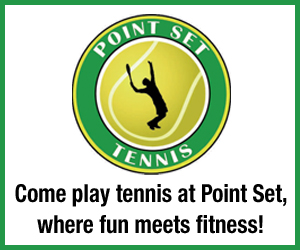Control: The Great Lie We Tell Ourselves

One of the greatest misunderstandings in tennis is the topic of control. All tennis players desire to have more control, more control of their emotions, more control on their shots, more control over their opponents; the truth is though that the things we think gives us more control often do not. The three things we do, as tennis players, to get more control are:
1.Change our racket,
2. Change our strings, and
3. Change the tension of our strings.
The truth is that none of these will give you more control. What it all comes down to is that there is a fundamental difference in how we understand control and what we think is control is actually controllability. Control comes from one thing and one thing only, and that is practice. The more you practice the more control you’ll have. There are a variety of drills and games that can be used in order to gain more control on court, but changing your equipment will only lead to greater controllability. Controllability is the variable that makes control more possible than otherwise, but in and of itself, controllability will not give you control. The way I explain this to my lessons is to use an example of a car. A regular sedan is going to be more controllable than an SUV, simply because its center of gravity is lower. Does this mean that driving a sedan will give you control? The sedan is not going to give you control, it will however be more controllable than an SUV. A bad driver is going to crash the SUV and the sedan equally, it’s only through practice that the driver increases his or her control.
When applied to tennis rackets, this holds true as well. Rackets that are more controllable (so called “players frames”) are usually head light, meaning that a majority of the weight of the frame is located below the head of the racket. Also, the more controllable frames usually have a smaller head size (between 88 and 93 square inches). These rackets are not extremely powerful and are usually for players with a longer swing. That being the case, simply switching to a control-oriented racket will not give you control. A player will hit the ball just as poorly with a player’s frame than with the racket they have been using for a while. The smaller head size and weight distribution may make it easier to control the ball, but don’t expect to change frames and find that you can hit a dime on court with your shots.
Control also seems to be a topic for strings as well. The packaging of a set of string will often advertise that it is a control string and may even sometimes give you a scale showing you where the string lies in terms of control. Again, this is more of a controllability issue than control. No set of string will give you more control. A good set of string will make it easier for you to control the ball, but this in itself will not give you more control. Regular synthetic gut is cheap and will not give you a lot of feel, whereas a better set of string (a multifilament or a premium) will make it easier for you to control the ball and provide better feel. This doesn’t mean that switching from your bargain basement $3 synthetic gut to a $14 premium multifilament will help you hit those down the line shots.
Lastly, some people seem to think that stringing at a higher tension will somehow give them more control. This couldn’t be more wrong and is a big tennis myth. Stringing at a lower tension will not give you greater power in the same way that stringing tighter will not give you more control. When a racket is strung at a lower tension, the ball rebounds at a higher angle off the racket. When a racket is strung at a higher tension, the ball will rebound off the racket at a lower angle. What this means is that if a ball is swung at with an equal amount of force on a shot with a racket at higher tension and a racket at lower tension respectively, then the ball struck with the racket at higher tension will not go as far as the ball struck with the racket at lower tension. The speed of the ball is not affected by stringing higher or lower, the only thing that affects the speed of the ball is mass and acceleration. So you either need more mass going into the ball (utilize better technique) and/or you need faster racket head acceleration (swing faster). When struck at with equal force a racket with lower tension will cause the ball to go deeper as it’s rebounding at a higher angle, and that is why we falsely attribute this result to power.
At the end of the day, everyone is looking to improve their game, but there are no quick fixes. Sometimes, we like to think of power and control being at opposite ends of the same spectrum, but this is just not the case. Getting a racket with less power won’t give you more control, getting a fancy set of string won’t give you more control, and stringing tighter will also not affect power or give you control. The best way to gain more control is to practice. Touring pros use all types of different rackets and different strings. This most immediately suggests the idea that there is no control string or racket. If there were a string or racket with the best control everyone would be using it. Experimenting with equipment can be fun and I readily endorse it, but there is no substitute for hard work.






